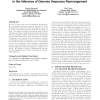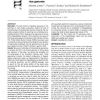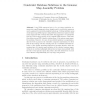407 search results - page 38 / 82 » TREC Genomics 2004 |
RECOMB
2004
Springer
16 years 4 days ago
2004
Springer
In order to apply gene-order rearrangement algorithms to the comparison of genome sequences, Pevzner and Tesler [9] bypass gene finding and ortholog identification, and use the or...
BIOINFORMATICS
2004
14 years 11 months ago
2004
Motivation: The high content of repetitive sequences in the genomes of many higher eukaryotes renders the task of annotating them computationally intensive. Presently, the only wi...
BMCBI
2004
14 years 11 months ago
2004
Background: Using sequence-structure threading we have conducted structural characterization of complete proteomes of 37 archaeal, bacterial and eukaryotic organisms (including wo...
125
click to vote
CDB
2004
Springer
15 years 5 months ago
2004
Springer
Abstract. Long DNA sequences have to be cut using restriction enzymes into small fragments whose lengths and/or nucleotide sequences can be analyzed by currently available technolo...
CSB
2004
IEEE
15 years 3 months ago
2004
IEEE
We describe a novel hardware architecture for genomic and proteomic sequence alignment which achieves a speed-up of two to three orders of magnitude over Smith-Waterman dynamic pr...



